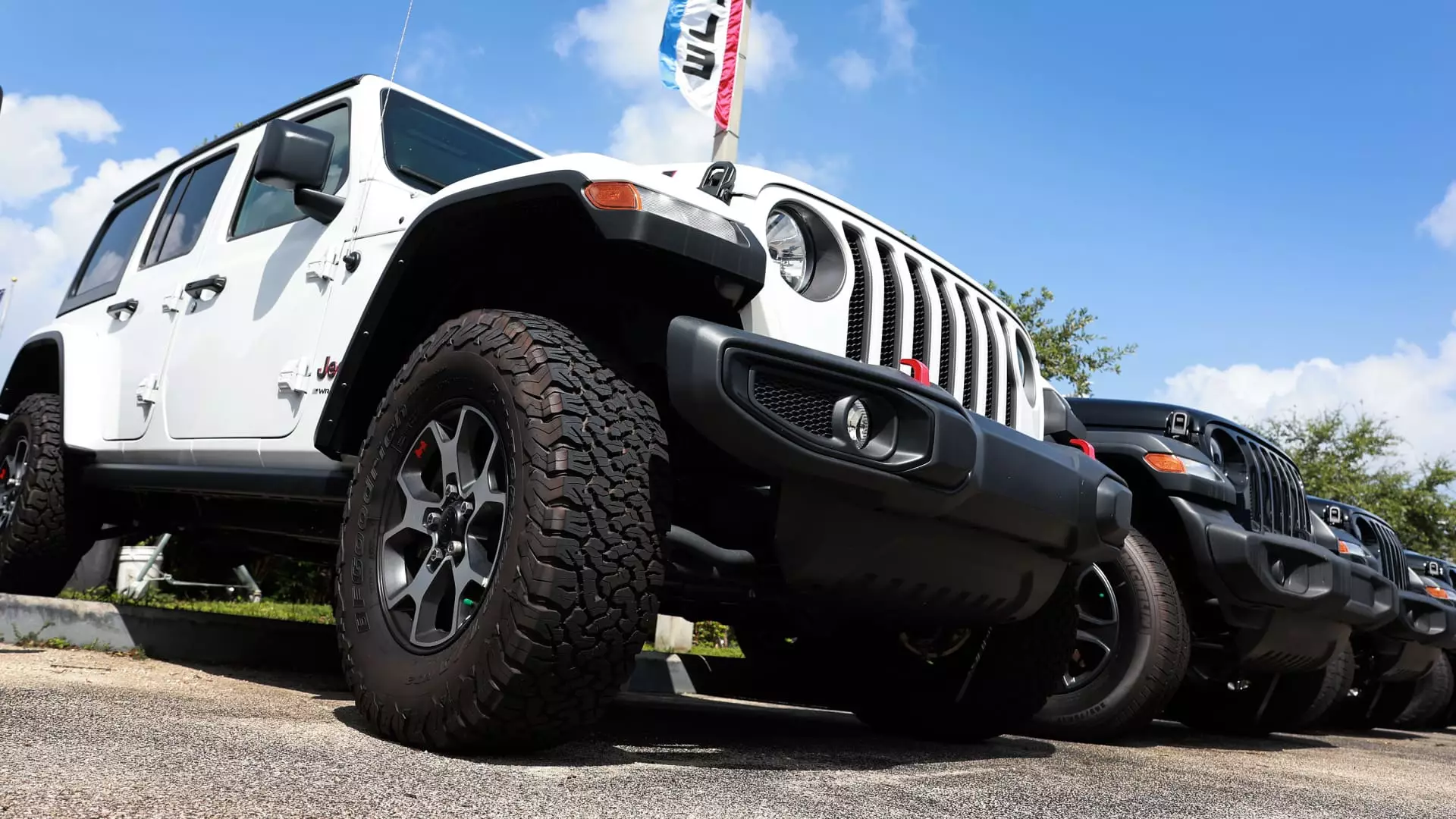The automotive market in the United States is facing a challenging landscape as we approach the final quarter of 2024. Numerous factors such as economic instability, high interest rates, and escalating vehicle prices have contributed to a slowdown in new vehicle sales that industry analysts are not optimistic about. Despite a slight expected recovery in broader economic indicators, the automotive sector remains turbulent, illustrating a complex picture for manufacturers, consumers, and analysts alike.
Predictions indicate that new vehicle sales in the U.S. will drop by approximately 2% during the third quarter of 2024 compared to the same period last year, totaling about 3.9 million units sold. This reflects a significant downturn, with sales projected to fall around 5% from the second quarter of 2024. Economic forecasters from reputable firms like Cox Automotive and Edmunds.com are attributing this lack of growth to a fragile economic environment. While the Federal Reserve’s recent decision to cut interest rates may foster some consumer confidence, it isn’t likely to result in a significant resurgence in auto sales immediately.
Insight from Charlie Chesbrough, a senior economist at Cox Automotive, emphasizes that affordability is at the forefront of concerns hindering market performance. Nonetheless, he expresses cautious optimism, acknowledging a potential improvement in affordability metrics, which might lead to a stronger market in the upcoming months. The affordability of vehicles has become an increasingly pressing issue for many consumers. As buyers face financing requirements that average around $40,000 for new vehicles, the pool of potential purchasers for new cars shrinks considerably.
Industry projections suggest total sales of light-duty vehicles may reach about 15.7 million units in 2024. While Edmunds remains consistent in its forecasts since the year’s beginning, Cox Automotive has revised its expectations downward from 16 million. This revision underscores the prevailing uncertainties that shroud consumer confidence and spending power.
Jessica Caldwell, from Edmunds, notes the troubling issue of cost, stating that many Americans simply cannot afford the current new vehicle market. This reality poses a significant barrier to entry for a wide array of consumers. The contrast between expected growth in certain manufacturers, like Honda and Ford, and anticipated declines for others, such as Stellantis and Toyota, signals the uneven nature of the recovery process across the automotive landscape.
Market Dynamics and Emerging Trends
Despite the overall projections, the electric vehicle (EV) segment provides a glimmer of hope amidst the stagnating sales trends observed in the wider market. EV sales are anticipated to rise by about 8% compared to the previous year, even though market leader Tesla is expected to see a small decline of approximately 2.4%. This is particularly noteworthy as Tesla’s market share has seen a dip below the 50% threshold for the second consecutive quarter, shedding light on increasing competition in the EV space and changing consumer preferences.
The trajectory of EV sales is being significantly boosted by government incentives. Incentives, which can aggregate to around 13.3% of the average transaction price for EV purchases, contrast starkly with conventional vehicles, securing a vital appeal in the current financial climate. The importance of these incentives becomes even more pronounced as they not only reduce the effective cost of EVs but also seem to be a crucial factor driving sales in a marketplace otherwise defined by high prices and limited buyer reach.
Challenges Facing Major Automakers
Some automotive giants are currently grappling with considerable sales challenges, particularly Stellantis, which faces a staggering forecast of a 21% decline in sales during the third quarter compared to a year prior. This suggests a copycat performance alongside Toyota and BMW, indicating systemic issues in market positioning and product offerings. Stellantis’ leadership has taken a stance prioritizing pricing and profits over market share, a decision that could be both a strategic long-term play and a potential short-term disaster amid fierce competition.
In contrast, brands like Honda and Ford are strategically positioning themselves to take advantage of the market’s variabilities, which may result in positive sales outcomes. Their results will be a litmus test for how adaptability influences success in the contemporary automotive world, an industry reeling from rapid shifts in customer demands and disruptive market forces.
As we conclude the discussion on current trends in the U.S. automotive market, it’s clear that the path ahead is fraught with complexity. While expectations for an uptick in EV sales present a hopeful outlook, numerous challenges remain for traditional vehicle sales and consumer affordability. Stakeholders will need to navigate an increasingly intricate landscape shaped by economic factors, changing consumer behavior, and the imperative for innovation among automakers. The question moving forward will be whether the industry can leverage these challenges into opportunities for renewed growth as we advance into 2024 and beyond.

